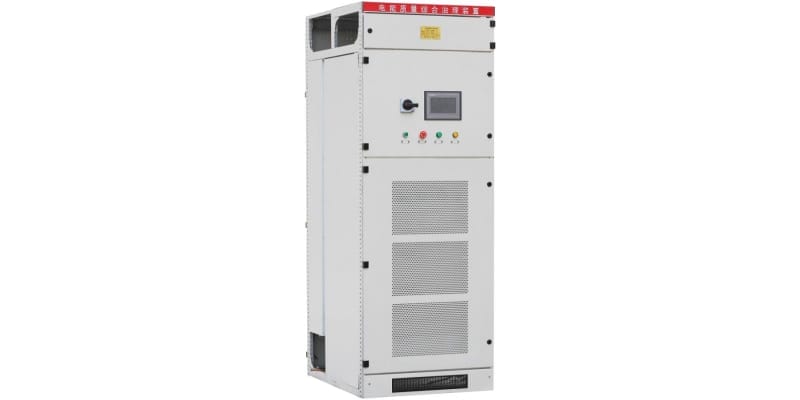- Home
- About us
- Products
- Dealer Enquiry
- Blog
- Contact Us
- Home
- About us
- Products
- Dealer Enquiry
- Contact Us
- 044 -2486 1994
- +91 99623 98222
- sales@nantech.in
- REQUEST A QUOTE

In today's complex electrical landscape, the consistent delivery of clean and reliable power is not just an advantage; it's fundamental to operational success. Active Harmonic Filters (AHFs) have distinguished themselves as intelligent solutions, adeptly addressing modern power quality challenges and offering engineers real-time protection they can depend on.
By the conclusion of this guide, you will possess a clear understanding of why specifying AHFs becomes essential when THD (Total Harmonic Distortion) mitigation is mission-critical. This is particularly important for achieving effective power factor correction in your power management strategy and for preserving the integrity of your electrical voltage waveforms.
Harmonics are like the extra or unwanted frequencies that combine with the main frequency of an electrical signal. They occur when the current or voltage waveform is not a smooth sine wave.
This harmonic distortion occurs due to the pervasive use of non-linear loads in your electrical systems, such as:
During harmonic distortion, you may encounter specific negative impacts, such as:
Furthermore, high harmonic distortion impacts your true power factor. Your existing power factor correction capacitors may become ineffective or even be damaged by these harmonics, potentially leading to utility penalties and higher electricity bills, especially if your facility operates under kVAh billing.
Understanding how AHFs operate involves exploring their core principles, detailed operation, and essential components. Let’s break down these elements to see how they work together for effective harmonic mitigation.
Harmonic distortions in electrical systems can cause voltage fluctuations or lead to the overheating of equipment. An Active Harmonic Filter (AHF)—an electronic device—plays a significant role in mitigating such destructive harmonic distortions by detecting and neutralising them as and when they occur.
The AHF works based on a highly effective principle—detect and cancel. The device continuously monitors the electrical system in real-time and identifies unwanted harmonic currents generated by non-linear loads. Once detected, it generates equal and opposite (180° phase-shifted) currents that effectively cancel out the unwanted harmonics.
This dynamic cancellation neutralises existing harmonics and adapts to changing load conditions instantly, ensuring consistent power quality. Unlike traditional passive filters that target specific frequencies, AHFs offer broad-spectrum harmonic mitigation with real-time adaptability.
Also Read: What Are Active Harmonic Filters And Its Application?
You need to analyse their dynamic four-stage operational cycle to fully understand how active harmonic filter works and combats pervasive harmonic distortion.
At the heart of every effective AHF solution lies surgical-precision diagnostics. High-fidelity Current Transformers (CTs) are strategically clamped onto your power cables, particularly in three-phase systems, capturing real-time current data at impressive rates, often exceeding 512 samples per cycle. They meticulously track their specific magnitude and phase relationships.
Once the harmonic signature is captured, the AHF's DSP controller (digital signal processing) instantly transforms into your electrical system's analytical brain.
Advanced signal processing algorithms meticulously cross-reference the measured harmonic data against your facility’s nominal voltage and existing power factors. This enables the precise calculation of the compensation current required to counteract each problematic harmonic component.
This mathematical inversion flips the harmonic phase angles to be exactly 180 degrees out of sync.
With the blueprint for correction defined, your AHF activates its power electronic stage through industrial-strength hardware. The system has an IGBT or Insulated-Gate Bipolar Transistor-based inverter bridge. This device, which is rated for demanding loads like 480VAC @ 600A, executes sophisticated Pulse Width Modulation (PWM) techniques, such as Space Vector Pulse Width Modulation (SVPWM).
This process rapidly transforms energy from its internal DC bus energy storage into precisely calibrated cancellation currents.
In this final phase, theory dynamically transforms into protective action through your AHF's closed-loop power amplifier system. High-density injection transformers, or sometimes direct connections, carefully feed the generated corrective current directly into your AC lines.
This action neutralises the disruptive harmonics at their very source of propagation. The system’s rapid refresh cycle, often around 10 kHz, facilitates what electrical engineers term “dynamic impedance adjustment”. This allows the AHF to automatically compensate for constantly varying loads from your diverse equipment, such as VFD motors, SMPS units, or battery chargers.
Each AHF has hardware and software components working in perfect synchronisation. Here’s a list of the elements and their functions:
These components ensure accurate and efficient harmonic compensation for optimal power quality, leading us to explore the key benefits of using AHFs.
The technical advantages of AHFs manifest in measurable operational improvements. These precise filters are effective tools for improving power quality in electrical systems. They work using a closed-loop control mechanism, which allows them to precisely remove unwanted harmonics. Here are the main benefits of AHFs:
As the demand for cleaner and more reliable electricity continues to rise, the importance of AHFs in maintaining power quality and system stability grows significantly.
You've seen that AHFs are key to managing harmonic distortion and ensuring superior power quality. These devices are used in commercial and industrial facilities, renewable energy installations, and data centres.
This intelligent harmonic mitigation boosts efficiency, extends equipment life, and safeguards system reliability.
At Nantech Power Systems Pvt. Ltd, one of the leading UPS manufacturers in Chennai, we offer expertly tailored AHF systems combined with our proven UPS technology. Contact our technicians today to explore these solutions and secure your free power consultation!
What Are Active Harmonic Filters And Its Application?
Why Choose Active Harmonic Filters Over Passive Harmonic Filters?
Active Harmonic Filters: Pros & Cons Explored
Modular UPS Versus Conventional UPS: Differences Decoded
Uncovering the Game-Changing Benefits of Modular UPS Systems
Maximising Inverter Battery Performance: Key Factors to Consider